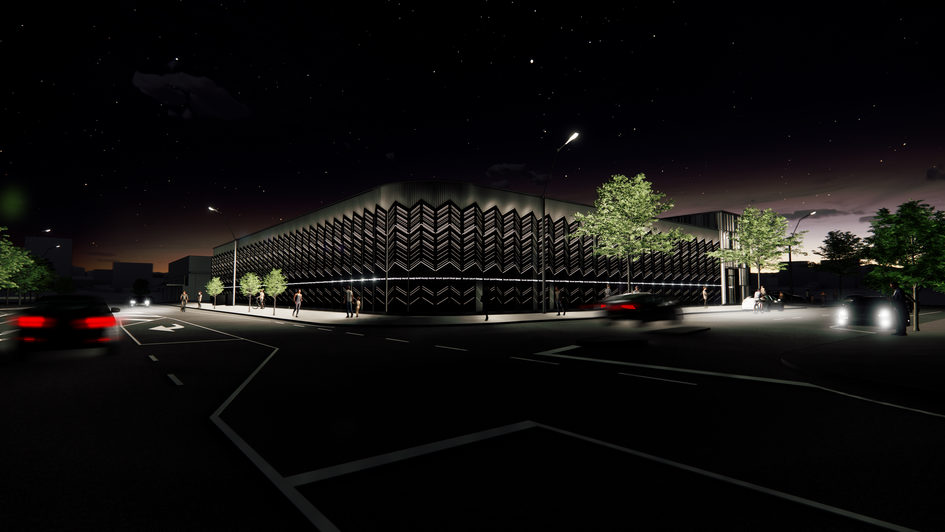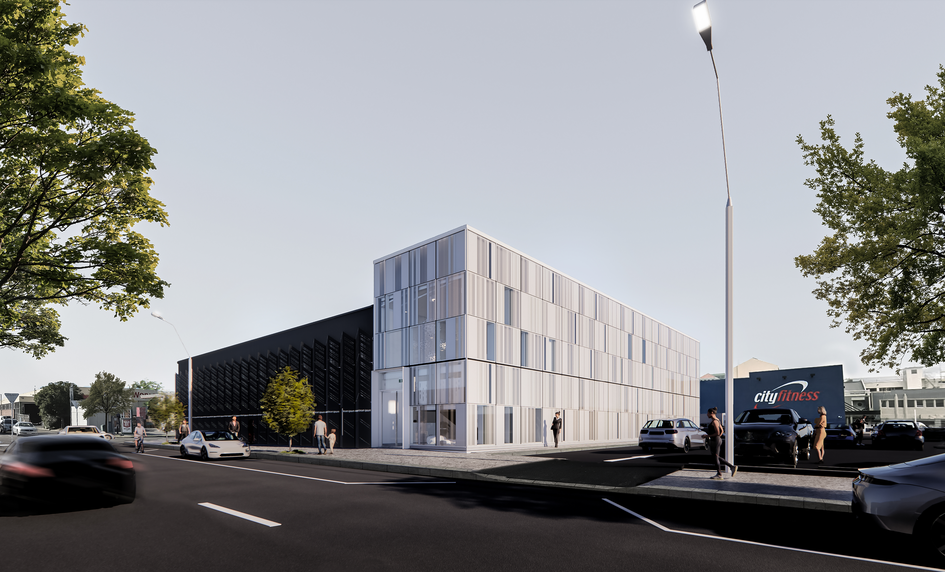A former Briscoes warehouse that had been vacant for several years was in their sights for refurbishment. Its location in the emerging cultural precinct within the Hastings CBD was ideal and, in terms of cost and embodied carbon, RTA Studio’s feasibility studies gave the project the big tick.
While crafting architecture to make a striking civic statement was important, ensuring safe storage for generational longevity lay at the crux of the design brief. “The facility is state of the art - a temperature- and humidity-controlled facility that meets global museum standards,” explains Casey Anderson, RTA Studio project lead.
The team collaborated closely with mana whenua and conservators during the design of the building which is named Hawke’s Bay Regional Museum & Archives Centre. The original structure was stripped down to a skeleton of the concrete pad, columns and primary steel roof portals. “That meant we reduced the need for new concrete by 715 tonnes and steel by 25 tonnes – a huge win in terms of sustainability,” says Casey.
Conceptually, the two-level, 2067-square-metre institution explores the notion of dark and light, physically manifested in two juxtaposed forms: the ‘dark’ storage box, set against a ‘light’ administration block where the conservator team will be based. A central seismic gap separates the two buildings. As Casey explains: “For seismic safety, the two structures cannot touch each other; they appear connected but move independently in an earthquake.”
Te ao (the light), Te po (the dark) and Te kore (the void/transition) also key into a Māori world view that there is strength in two opposing forces. The storage facility, which can be considered a waka huia (treasure box), features a laser-cut aluminium façade that resembles a huia feather. This aligns with the narrative of protection: an ornate cloak to shield precious taonga within. Symbols, representing significant parts of the collection, will be added to the façade at eye level so that pedestrians walking by can connect with the items within. At night, lights will glow through apertures in the façade and through the frit-glass coat of the white administration block, so the structure becomes a beacon of positivity and history within the precinct.
Indeed, the project is passionately important to the region. Working alongside iwi groups, MTG conservators, council representatives and members of the community, this quickly became evident. “It’s critically important to this community and their ancestry. It’s about whakapapa. We had council members hugely emotional in chambers when we presented the designs. This really brought home how special and important this facility was,” says Casey.
Hawke’s Bay Regional Museum & Archives Centre is set to be completed in April 2025. That’s when the precious taonga representing ancestral connections to the region and Aotearoa, will finally come home.

